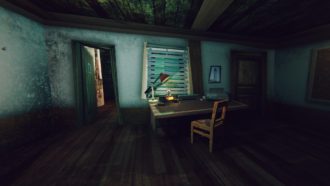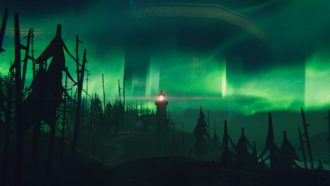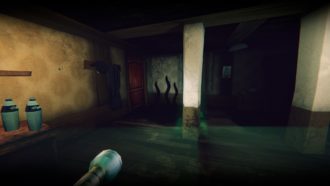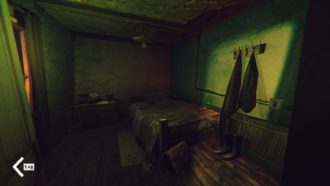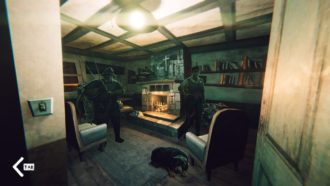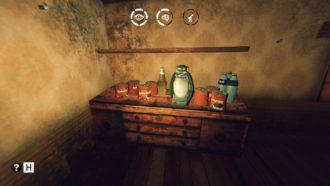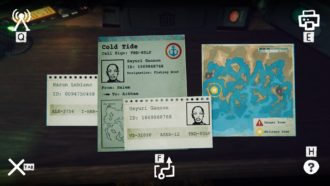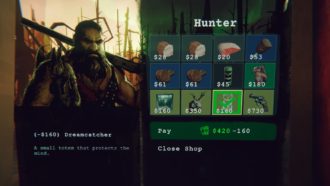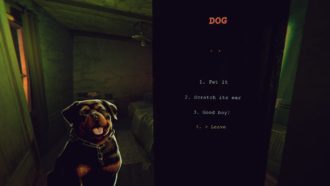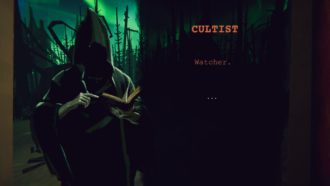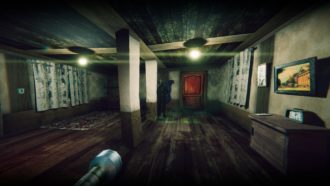Platform:
PC
Released:
August 7, 2025
Publisher:
Polden Publishing
Developer:
Solarsuit Games
Static Dread: The Lighthouse, developed by Solarsuit Games and published by Polden Publishing, is an attempt at blending the high-stakes bureaucracy and ethical dilemmas of Papers, Please, with the suspense and dread of Lovecraftian horror. Where, instead of checking visa documentation at the border of a totalitarian nation, you are checking documents to make sure ships reach the right harbour.
If you need to know anything about me, it is that I am a fiend for all things horror. I own all of H.P. Lovecraft’s written works. I frequently play the Call of Cthulhu tabletop role-playing game. And my bookshelf and my games library are filled with countless tales of terror, including The Sinking City and Call of Cthulhu. I not only enjoy the Cthulhu mythos, but I absolutely adore horror and its many variants and subgenres. So, naturally, I was excited to get my hands on Static Dread. However, that excitement quickly faded to disappointment and boredom. This is not an atrociously bad game; it is just forgettable.
Something wicked beckons from the sea
Set in an alternative version of America, Static Dread takes place in the aftermath of a global cataclysm, where an aurora has enveloped the entire world, rendering modern digital communications obsolete. You play as the lone lightkeeper sent to the forsaken island of Outsmouth, and are the only one equipped to helm this lone beacon of solace in an increasingly perilous world. But if you wish to see your family once again, you must maintain your sanity. Preserving your mind against reports of monstrous creatures, mutating villagers, vanishing crews, haunting melodies, and strange cultists.
As the lightkeeper, you are responsible for the fate of every passing vessel and the people and supplies onboard. And over the course of 15 days and nights, your judgment and decision-making abilities will be tested. But each night brings its own challenges, and one error is all it takes to spell disaster. Soon, the fate of the world will hang in the balance of your hands, and whether you revelled in the powers of darkness, surrendered to the Great Old Ones, rebelled against authority, or helped those in need.
Your duties are relatively simple at first, but they build in complexity each night. During the day, you are free to explore the lighthouse and solve its mysteries; you’ll interact with vendors and anyone who comes by your door, and manage your resources and consume food and drinks to build up your energy meter to keep you awake through the night, to improve your running speed, or to build up your sanity gauge to keep yourself fighting fit through the darkness’ attempts to wear you down. At night, in addition to your duties of guiding ships to their destination, you’ll need to keep the lighthouse operational when things go kaput. Powering the generators, keeping the satellite tower active, and making sure the lights stay on.
But as you’re doing that, strange things start to happen. Lights will flicker and randomly go out. Eldritch symbols painted in red will mysteriously appear around the lighthouse. Weird calls can be heard on the radio. Eerily creepy people from the neighbouring village appear on your doorsteps, asking you to let them in, and a sinister voice on the radio tells you to quit your job and run. But for the first night, though, you’ll scan through frequencies on an old radio until you find a ship calling you, then you’ll get a fax sheet for where they need to go, and chart a course to get them to their target destination.
Stylistically, Static Dread has a very unique look to it. Everything in the lighthouse has an aged, almost decrepit feel to it, which drives home the fact that this place has not been inhabited for a long time. The game uses a softer kind of pixelated, PSX graphical design to provide a crunchy, gritty, and raw look to objects and shapes. Adding a surrealist element to this game in response by creating slanted walls and oblong doors. While not entirely low-polygon, the overall visual design builds extra layers of subtlety to the aging and run-down interior of the lighthouse. Creating depth to the peeling paint and exaggerating the details on cobwebs and dirt resting on the walls.
However, where the game shines brightest is in its art design. Character designs are vibrant and unique, with beautiful illustrations for every visitor who makes their way to your door. The characters of Static Dread are the stars of this show, and I started looking forward to seeing them come by the lighthouse. Characters gently move when in dialogue, so they never feel static, but instead dynamic. Their designs also changed as events in the story took place, with some characters sporting gills and scales, whilst others became more dishevelled and tired. Even the illustrations for the Great Old Ones were magnificent to look at.
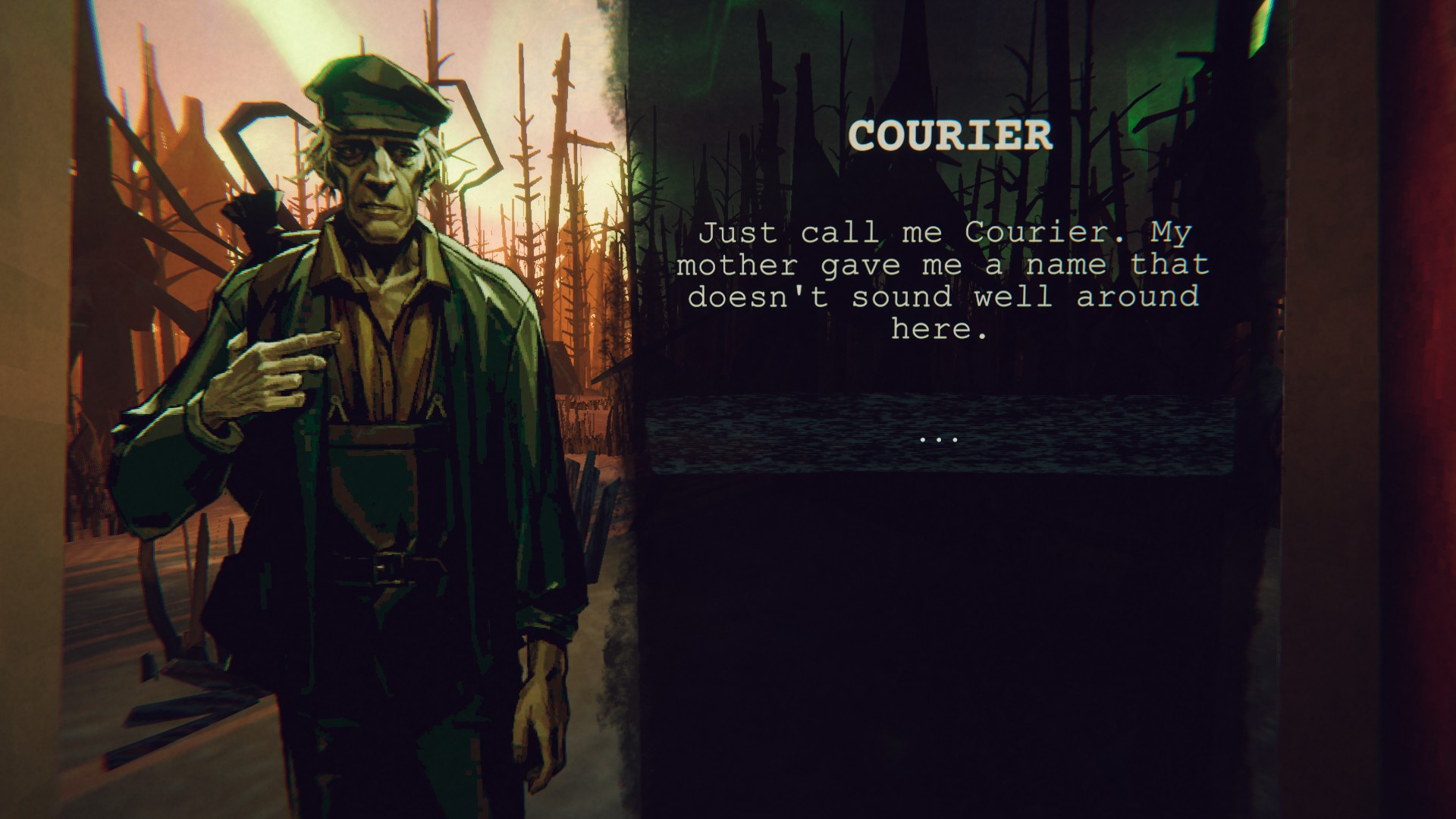
At least the pay is good
But mechanically, everything in Static Dread is underutilised. Running low on energy has no real repercussions and merely results in your vision getting increasingly obscured as your character’s eyes get heavier with fatigue. Whereas when your sanity decreases, a red vignette begins to cover the screen, and more and more strange events transpire. But it takes far too long to result in your death, and on multiple occasions, I was able to complete the night before my mind shattered. Furthermore, there is a hide mechanic that I was never given a reason to use. The threats in this game just kind of emerge from the ground and inconvenience you rather than pose any real danger. So I was left asking what, if anything, is there to hide from?
Additionally, it makes resource management arbitrary when I can just go the rest of the playthrough low on sanity and energy, but still complete my tasks with ease. But the real cherry on top is how Static Dread‘s survival mechanics are immediately made redundant by day two when you can purchase the fishing rod and the coffee pot. While the fishing rod gives you near infinite access to fish during the day, which restores energy and sanity, the coffee pot fully recharges your energy upon use. You might think these are items you need to constantly purchase coffee beans or bait for, considering how powerful they are and how early you can get them, but you would be wrong. For a one-time purchase, you can completely negate one of the game’s core mechanics, fully building your resources and recharging your energy at any time.
“The crux of Static Dread’s gameplay loop is rooted in its rather dull monotony.“
The crux of Static Dread’s gameplay loop is rooted in its rather dull monotony. Sitting down at your desk, scrolling through frequencies, charting destinations, and dealing with the symbols that emerge around the lighthouse. While the gameplay may vary night to night, with new goals and interesting obstacles that change the way you chart the course of the ship. The routine of it all soon gets old and repetitive. Running around and clearing symbols is a complete inconvenience rather than a source of dread, and the lack of urgency from the absence of a timer reduces the weight that your actions should have to nothing.
This repetition is such an egregious issue in my eyes because it is coupled with the sheer lack of cohesion between the gameplay and the stakes being communicated to you. The game’s story tells you just how important your job is and how people rely on you to complete your tasks as fast as possible. But at the same time, the gameplay offers no consequences for you just choosing to do nothing. Which is an absolute shame, because I could see the crumbs of something good brewing beneath the surface. In the flavour text of automated broadcasts and panicked crews begging for help, and in the grand scope of the game’s worldbuilding, its writing, and even in the game’s relatively simple mysteries. But there was so little to the story to keep me on edge, to discomfort me, to keep me entertained, or push my rapid judgment to its limit. But even when the game did grab my attention, it would then throw a wrench in the works.
You see, Static Dread has a habit of referencing other media and other video games. Or shoehorning in moments of levity. It’s not necessarily a bad thing, but the references and attempts at humour being made were so tonally and thematically incoherent from what was happening in the story that I just lost all interest as a result. And I had to ask myself, what is this game’s intended tone?
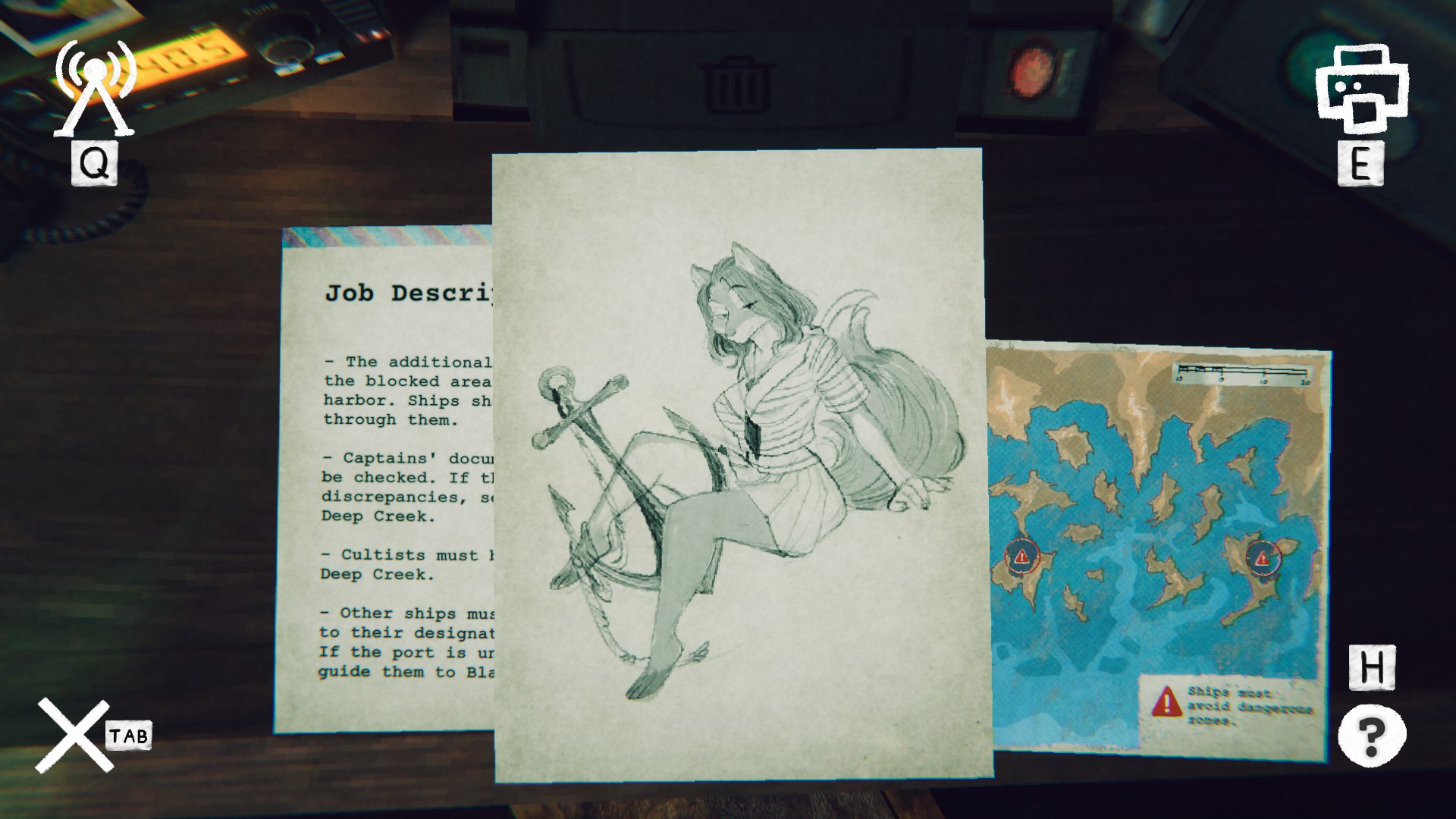
One of the most glaring examples of this was when a piece of furry artwork was faxed to me rather than the ship’s documents. I didn’t laugh, I didn’t go “wow that’s very good artwork” (which it very much is, as is all the art in this game). I just felt whiplash from the game becoming more serious, and then throwing this attempt at humour at me. Safe to say, it did not land. If anything, it hurt. Because it took me out of that moment of genuine interest for no reason that makes sense within the world it’s trying to create.
But these things don’t just happen once; they happen repeatedly. Every time the game referred to something else or threw in an easter egg, whether it was quoting Cyberpunk 2077’s “wake up, samurai,” references to the Witcher series, or even when it printed out a QR code for an entirely different game on Steam called Machine Mind, that quite literally took me out of the game I was taking time out of my day to play. The game then had to rebuild my interest from scratch. And after a couple of hours of this happening over and over again, of the game making a mockery of my time and energy, it simply never could make me care.
The only reference that made sense within the foundations of Static Dread’s world and matched the tone the game so painstakingly failed to orchestrate was a cameo from a character straight out of No, I’m not a Human. But the fact that this game kept doing these very poor attempts at intertextuality to enrich the narrative or engage the player left me under the impression that Static Dread doesn’t trust in its own identity.
The oldest and strongest emotion is fear
For a game with the word ‘dread’ in it, there isn’t any to be found here. There is no fear, anxiety, intense atmospheric horror, or terror being instilled in me. Everyone knows what they are getting into when they hear the word “horror,” but none of those elements and conventions are present. The lighthouse is small, and the game stresses the importance of keeping the lights on, but even when they are off in the dead of night, the place is incredibly well lit by the greens and yellows of the aurora peaking through the windows. It doesn’t help that any sound of something that may lurk out of sight, or the darkness emerging from the ground, is completely blocked out by the dominating, ear-bleeding drone of the radio.
Additionally, there is no tension being established thanks to the lack of any meaningful penalty for ignoring ships, never answering the door, or letting your energy meter go down. Even the darkness that tries to consume you is easily circumvented by just walking around it when it emerges from the ground, or turning on the light. What little scripted or subtle scares that are present, such as a shadow moving across the wall, or a door repeatedly opening and shutting, are not only entirely missable, but also not scary. And the ones I did manage to find were then repeated ad nauseam several times in one night. By five hours in, I was still waiting for the supposed horror game to begin.
“For a game with the word ‘dread’ in it, there isn’t any to be found here.”
While this game does boast having multiple endings and a branching narrative, I can’t imagine wanting to replay it because of how tediously repetitive, poorly paced, and non-compelling it is. The gameplay is not particularly enjoyable, and its story is full of dull tropes and predictable clichés. Yet the puzzles introduced to lull you over can’t be completed until the game permits you to. So you are forced to sit with a story that is just plain boring, while you know there are mysteries around the lighthouse more interesting. By night eight, my patience was worn so incredibly thin waiting to get the green light to engage with this game’s content that I considered dropping it entirely.
Static Dread is just one part of a larger problem that I have noticed in the majority of Lovecraftian-inspired video games. That is, the ideas, themes, and conventions of Lovecraft do not translate well to video games. But I could see a universe where, given more tender love and care, this could be more than something completely mediocre. The problem is that because Lovecraftian works thrive off the human imagination and our innate response to the unknown, the unimaginable, and the unfathomable, they struggle when adapted into a visual medium that requires the player to be shown something. And Static Dread doesn’t do enough to solve that problem of visualisation with its atmosphere, its story, its gameplay, or its sound design. Rather, it flounders on all fronts and contributes to it by doing the one thing you should not do: revealing your monsters too early. I came in expecting a horror version of Papers, Please. But instead, I got an overstretched, middling, and forgettably repetitive game.
4
Mediocre
Positive:
- Rich and well-designed character models
- Pretty good visual design
- Develops upon its core gameplay loop and increases its complexity every night
Negative:
- Forgettable narrative
- Not scary at all for a horror game
- Tonally and thematically inconsistent
- Significantly repetitive gameplay lacking fully developed sanity and energy mechanics
- Poorly implemented survival elements
Static Dread: The Lighthouse is a disappointing attempt at combining the suspense, dread, and worldbuilding of Lovecraftian horror with the gameplay of Papers, Please. With what little this game does right, such as its incredible character designs and art, it is sadly overlooked by its tonal inconsistencies and its diabolical mediocrity, from its poorly implemented sanity and energy mechanics to its horrendously easy and repetitive gameplay loop. It’s an easily forgettable and thematically incoherent narrative, lacking any genuine horror elements, and revealing its eldritch threats too early on. Few games capture the essence of H.P. Lovecraft, and Static Dread falls flat at every turn.
